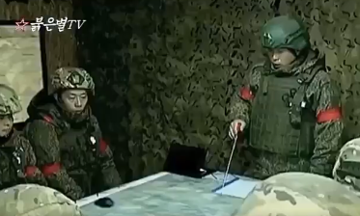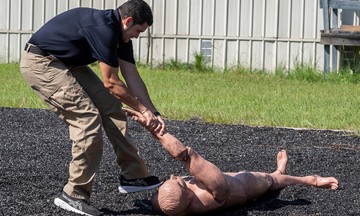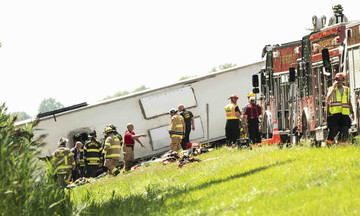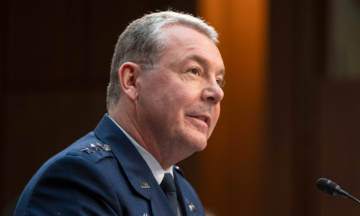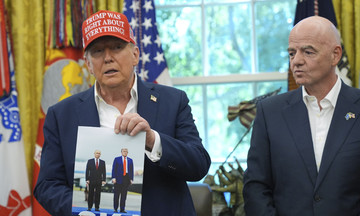Russian forces are tightening their noose around the Ukrainian stronghold of Pokrovsk in eastern Donetsk province, now just 16 km away, according to DeepState, a military analysis group linked to the Ukrainian army. The UK Ministry of Defense estimates that Russian forces captured 500-550 square kilometers of Ukrainian territory in July, a significant increase compared to previous months.
Russia also launched a tactical assault near the Dobropillia-Kramatorsk defensive line, not far from Pokrovsk, threatening to seize the town of Dobropillia. While Ukraine has launched counteroffensives, they have only reclaimed small areas, while Russia's rapid incursions are depleting Kyiv's defensive resources in the region.
 |
The situation on the Pokrovsk front as published by Ukrainian analysis groups on 17/8. Graphics: Deep State. |
Russia's advances in the Donbass region, comprising Donetsk and Luhansk provinces, not only expand Moscow's territorial control but also bolster its negotiating position as diplomatic efforts are revived.
While the prospect of a direct meeting between Ukrainian President Volodymyr Zelensky and Russian President Vladimir Putin to find a solution to end the war remains uncertain, the situation on the ground is increasingly unfavorable for Kyiv.
Russia's current main objective is Pokrovsk, a vital logistics hub for the Ukrainian army, once home to some 60,000 residents.
Since June, the Russian military has also expanded operations to the edge of Dnipropetrovsk province in central Ukraine, thereby reinforcing the southern flank of the Pokrovsk front. Although Ukraine claimed to have retaken some border villages on 21/8, Russia maintains pressure on multiple fronts.
Analysts believe that Russia's offensive pace could further accelerate, and Pokrovsk risks falling within months if Kyiv lacks sufficient forces for a counteroffensive.
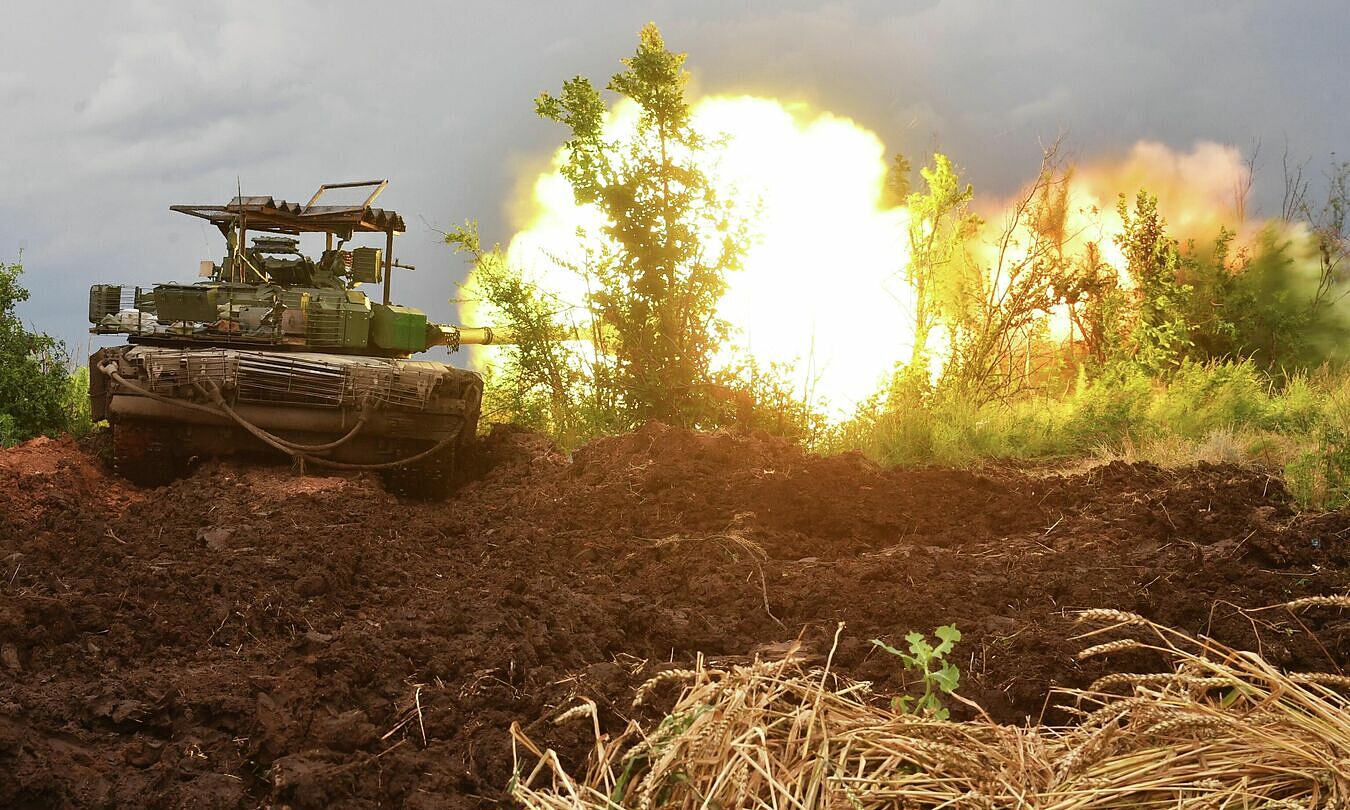 |
Russian T-80 tanks operate on the Donetsk front in 6/2023. Photo: RIA Novosti. |
In addition to Pokrovsk, Russia is also closing in on Kostyantynivka, about 50 km to the northeast. This city is under attack from three directions, as Russia launches assaults from Chasiv Yar and Toretsk, cities they largely control.
Finnish military expert Emil Kastehelmi warns that Ukrainian lines are severely stretched, with insufficient troops spread across the long front line. Meanwhile, Russia maintains its troop numbers through steady recruitment programs, giving them a significant manpower advantage.
Ukrainian Commander-in-Chief Oleksandr Syrsky estimates that the Russian army receives around 9,000 new recruits each month, offsetting battlefield losses.
At a summit with US President Donald Trump in Alaska on 15/8, Russian President Vladimir Putin reportedly proposed freezing the front line in its current state in exchange for Ukraine withdrawing from the territory it controls in Donetsk.
Russia currently controls about 70% of Donetsk province, including the regional capital. Securing all of Donetsk would give Moscow complete control of the Donbass, a strategically important region with significant resources.
Ukraine still holds about 6,600 square kilometers in Donetsk, with a population of nearly 250,000. Major cities like Kramatorsk, Slovyansk, Kostyantynivka, and Druzhkivka are the remaining industrial centers in Donbass. However, the war has devastated the region's economy, leaving many cities in ruins.
According to the US-based Institute for the Study of War (ISW), Ukraine has built a 50-km "fortress belt" in western Donetsk, with trenches, anti-tank obstacles, and barbed wire. This defensive line, fortified over 10 years, poses a significant challenge to Russian attacks.
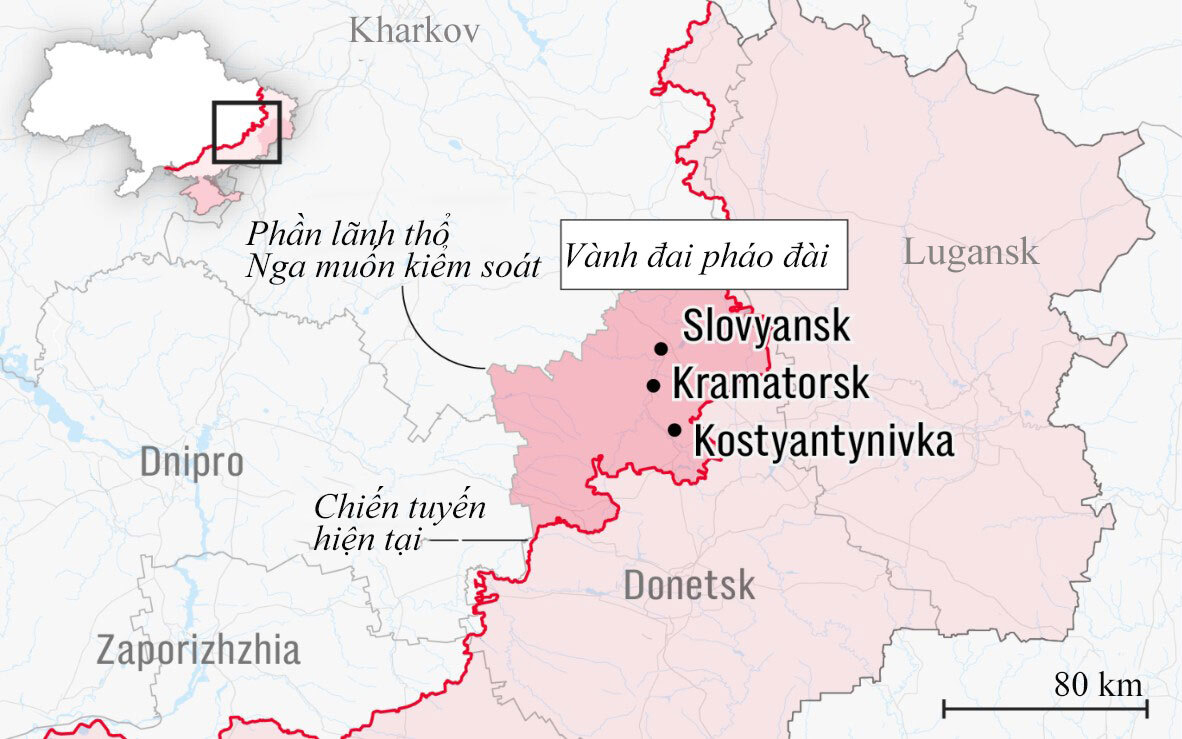 |
Map of the Donbass region. Graphics: Telegraph. |
However, researcher Nick Reynolds from the Royal United Services Institute (RUSI) notes that the Donbass terrain now disadvantages Ukraine's defenses, as the Russian-held city of Donetsk sits on higher ground.
Western Donetsk, where Ukraine built its "fortress belt," has a downward slope, limiting the defenders' visibility and fire support capabilities.
Chasiv Yar, a high point that Russia captured in early August, was one of Ukraine's last strategic strongholds for maintaining its defensive line. Losing this position significantly hampers Kyiv's ability to coordinate operations.
Western experts believe that with these advantages in Donbass, the Russian military is unlikely to cease fighting immediately. Instead, they will likely capitalize on their current momentum to seize as much territory as possible before entering any negotiations.
"There have been many statements about peace talks, but on the ground, the Russian military has not shown any change in its offensive," Kastehelmi observed.
Thanh Danh (Kyiv Independent, BBC, Reuters)



